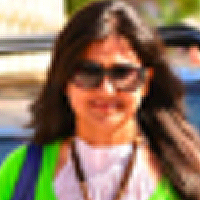Tunable induced transparency and Fano-resonance in double cavity optomechanical system
Published on: 7th April, 2021
OCLC Number/Unique Identifier: 9026724935
We analyze optomechanically induced Transparency and asymmetric Fano-line shape Profile in a two-mode cavity system, coupling at weak and strong coupling regimes. The model system consists of one mechanical mode and two optical modes. The transmission shows nonreciprocal behavior. Both the forward transmission and backward reflection for the system are analyzed for both optic-optic and mechanical-optic cavities by considering various system parameters. The output spectra lead to sharp asymmetric Fano-resonance and tunable transparency. Double line-shape profile is observed in the output Spectrum. Our proposal provides a new platform for application in quantum telecommunications and a photonic device like optical Switches.
Obesity may contribute to Japanese COVID-19 death rate
Published on: 22nd December, 2020
OCLC Number/Unique Identifier: 8872658812
Japan enjoys the longest expectation of life at birth among major developed countries, and one possible reason for this is that obesity is rare in Japan. Further, COVID-19 death rate is extremely low in South Korea and Japan compared to the other developed countries, and low obesity rate may be related to this phenomenon.
Prospective study of pain and psychological symptoms of first-year university students
Published on: 10th February, 2021
OCLC Number/Unique Identifier: 8920586207
Background: Even if pain and psychological symptoms experienced by university students are common, the prognosis of these symptoms is unknown.
Objective: To examine the incidence and the outcome of frequent musculoskeletal and psychological symptoms in a 4-year follow-up of first-year university students.
Methods: In 2008, a national random sample (N=2750) of Finnish university students completed a questionnaire concerning pain and psychological symptoms. Of the 416 first-year students, 123 responded to the same questionnaire also in their fourth study year in 2012.
Results: Of the first-year university students with frequent pain or psychological symptoms, one half (47% - 65%) reported frequent symptoms also four years later. Almost all (78% – 95%) of the symptom-free first-year students were symptom-free also in their fourth study year.
Conclusion: Our findings indicate that pain and psychological symptoms in university students are rather persistent during the first four study years. On the other hand, as half of those with frequent symptoms become symptomless and as the prognosis of symptom-free students is favourable, there is still need for further cohort studies on this issue.
Nurse as a court expert in Poland
Published on: 14th December, 2020
OCLC Number/Unique Identifier: 8872697151
The nurse in Poland may have a secondary level of education (secondary school or post-secondary) or high level (BSc and MSc). She can have a specialization of one the parts of medicine. After the MSc studies she can take the doctor’s degree. But we must take as a fact that with the high level of education and specialization she can be the Court Expert i.e. in nursing anesthesiology, intensive therapy, nursing first aid, palliative medicine as well as in many other cases. As about nursing we should remember that woman and man can practice this specific profession [1].
StatesCare–The Cure for “Patient” Healthcare
Published on: 20th October, 2020
OCLC Number/Unique Identifier: 8691717864
Fifty years of Washington’s fixes for healthcare have brought us to the brink: insurance is unaffordable and care is unavailable, certainly not in time. The way to make healthcare work for We the Patients (all Americans) is to take healthcare authority away from third-parties – government and insurance – and restore the direct doctor-patient connection with no bureaucrat in between. The cure for patient Healthcare is StatesCare combined with market-based medicine. Financial models confirm this approach will make care both affordable and accessible in a timely manner.
Knowledge and attitude of workers towards HIV post-exposure prophylaxis and exposure of staffs to sharp injuries in Dessie Referral Hospital: 2020; A cross sectional study
Published on: 5th October, 2020
OCLC Number/Unique Identifier: 8681469728
Background: Post exposure chemoprophylaxis can prevent human immunodeficiency virus (HIV) infection in risk healthcare workers; however routine adoptions of these practices by the workers have been limited.
Objective: To assess knowledge and attitude of health workers on HIV post-exposure prophylaxis and exposure to sharp injuries in Dessie referral hospital.
Methods: Across-sectional study was conducted on 422 health care workers of Dessie referral Hospital. The study subjects were selected by proportional allocation of each sample in its respective department/ward. Simple random sampling method was used to select study participants. The data was cleaned coded and analyzed by using statistical package for social sciences (SPSS) version 23. Finally the result was presented by graphs, pie chart and statements.
Results: A total of 422 study subjects were participated in the study. Among 422 participants 72.5% had good knowledge of post exposure prophylaxis for HIV and the rest 27.5% had poor knowledge of post exposure prophylaxis for HIV. Among 422 study participants 75.2% had positive attitude towards PEP.
283(67.1%) of them had exposure to sharp injuries.
Conclusion: Generally most of health care workers had good knowledge about post exposure prophylaxis against HIV/AIDS. This study had shown that a significant number of individuals had a negative attitude with regard to post exposure prophylaxis. Therefore, formal training that aims to improve attitudes and support to improve PEP implementation and completion are needed.
Influence of high frequency rotating magnetic field on the effect of heating magnetic fluid
Published on: 5th April, 2021
OCLC Number/Unique Identifier: 9026744675
The article describes the necessary conditions for the phenomenon of thermal energy release in a magnetic fluid placed in a high-frequency rotating magnetic field. The minimum amplitude of the magnetic field was calculated and the thermal power released (by the rotating spherical nanoparticles in the viscous medium) was estimated. The estimations were based on the assumption that the magnetic relaxation times (τN and τB) and the magnetic field rotation period (τrot) meet the condition: τN>>τrot>>τB. The principle of operation and construction of the device generating a high-frequency rotating magnetic field is described. Preliminary experimental studies were carried out using a magnetic fluid with magnetite nanoparticles that indicated magnetic relaxation as the cause of the released heat. The value of the absorption rate in the experiment and its dependence on the strength of the magnetic field were determined.
FITT-CORRECT: Updated dynamic and evidence-based principle of exercise prescription
Published on: 15th February, 2021
OCLC Number/Unique Identifier: 9038777023
Objective: The FITT (Frequency, Intensity, Time, and Type) principle is an effective foundation in EP. However, the CORRECT components; C–Combination of interventions, O–Order of the Interventions, R–Repetitions, R–Rest period between sets and between sessions, E–Exercise at home, C–Cognitive domain, T–Total dose and re-evaluation plans, should be considered. The purpose of this paper was to describe the updated dynamic and evidence based FITT-CORRECT principle of EP and demonstrates its application using a case study.
Results: Literatures, related to EP, clinical reasoning and clinical decision-making, were critically reviewed. Established evidence is summarized to describe an updated dynamic and evidence-based principle of EP. The gaps within the FITT and other related principles of EP are addressed. The FITT-CORRECT principle was introduced and an effective outcome of the updated principle was demonstrated using a case study. The FITT-CORRECT principle integrates many components that are missing in the FITT and other related EP principles. Based on the reported case study, the FITT-CORRECT principle of EP should optimize patients’ intervention outcomes. Physiotherapists can potentially improve their EP by utilizing the FITT-CORRECT in clinical practice.
Radionuclide contents in yam samples and health risks assessment in Oguta oil producing locality Imo State Nigeria
Published on: 5th April, 2021
OCLC Number/Unique Identifier: 9024345201
Oguta LGA is surrounded by 44 oil wells located around different communities. Preliminary investigations indicated that crude wastes were not properly managed and oil spillage occurred regularly in the LGA. Therefore, assessment of both radionuclide contents in yam matrix and health risks in Oguta was carried out to determine possible radiological health risks associated with improper management of crude wastes, and also evaluate haematological health profile in the LGA for future reference and research. A well calibrated NaI (Tl) detector was deployed for the radiological investigation, and about 5 ml of blood samples were collected from 190 participants each from Oguta and the control LGAs for haematological assessment. Mean activity concentrations due to 40K, 226Ra and 232Th in yam samples from Oguta LGA were 189.99 ± 59.14 Bqkg-1, 23.75 ± 5.69 Bqkg-1 and 30.99 ± 9.51 Bqkg-1, respectively while mean activity concentrations due to natural radionuclides in yam samples from control LGA were 110.40 ± 78.53 Bqkg-1, 10.12 ± 3.34 Bqkg-1 and 18.39 ± 8.74 Bqkg-1 for 40K, 226Ra and 232Th, respectively. Committed effective dose equivalent values in Oguta and the control LGAs were 704.95 ± 183.30 μSvy-1 and 403.65 ± 172.19 μSvy-1, respectively which are less than world average value of 1.1 mSvy-1. Crucially, one-way ANOVA at α0.05 has indicated that effects of radiological parameters due to natural radionuclides in yam from Oguta are significantly different from effects of radiological parameters due to natural radionuclides in yam from the control LGA. However, the percentage contributions of natural radiation exposures to incidence of cancer in Oguta and the control LGAs are just 1.7% and 1.4%, respectively, and haematological investigations have shown that overall health of the communities in the study LGAs has not been compromised due to environmental and human factors. Hence, natural radioactivity may have been elevated in Oguta but the concentration levels are not yet alarming. Radiological health risks could result from consistent exposure to those natural radionuclides in the long term.
Expectations versus reality: Improvement of symptom control and quality of life of oncology patients using medical cannabis
Published on: 22nd July, 2020
OCLC Number/Unique Identifier: 8657517928
Aim: To compare the expectations and the reality of oncology patients in terms of to the use of medical cannabis, including symptom control and related quality of life.
Research question: Is there a difference between oncology patients expectations and their reality concerning the use of medical cannabis and what do oncology patients experience regarding symptom control and quality of life?
Method: This research was done in a tertiary hospital in Israel at the oncology clinic A comparative study that used self- administered questionnaires for patients who received authorization to use medical cannabis. The first questionnaire was given to patients after receiving the authorization to use medical cannabis and asked about their expectations related to its use. Patients filled out the same questionnaire for the second time, approximately two months after. Comparison of the respondent’s answers, before and after using medical cannabis, showed reality of improving symptom control and Quality of Life.
Results: Seventy-four patients completed both questionnaires. Most patients reported advantage in symptom control when using medical cannabis, although their expectations were somewhat higher than the reality experienced. Advantage of using medical cannabis was also found concerning improvement of quality of life. Seventy-five of patients still used medical cannabis once completing the second questionnaire and most of them reported that they would recommend the use of medical cannabis.
Conclusion: It can be seen from this study that for many oncology patients the use of medical cannabis may be very helpful. However, the use of cannabis is not free of side effects, as can be seen from the patients’ reports. This has clear implications for oncology nursing practice and may lead to a better understanding of patients using medical cannabis in the future, in terms of its benefit and side effects.




